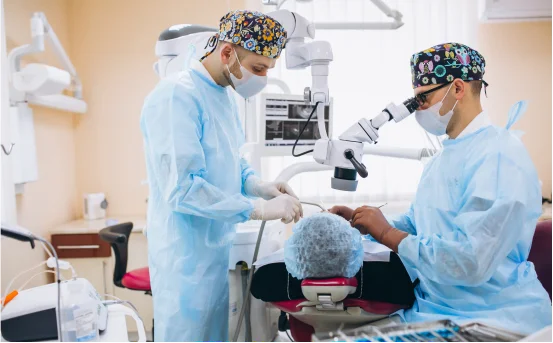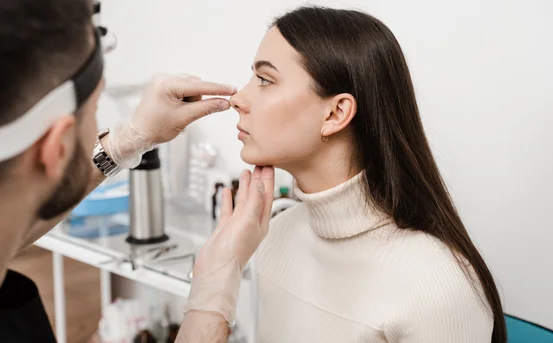Noticing unusual sores, lumps, or color changes inside your mouth that just won’t go away? It’s natural to feel concerned, especially when these changes last more than two weeks or begin to worsen. In such cases, your dentist or oral surgeon may recommend an oral biopsy, a minor surgical procedure that can help diagnose serious conditions early, including oral cancer, infections, or autoimmune disorders.
While the word “biopsy” might sound intimidating, oral biopsy surgery is a quick, safe, and important diagnostic tool. The procedure allows healthcare professionals to examine suspicious tissue under a microscope to identify the cause and begin appropriate treatment as early as possible.
What is an Oral Biopsy?
An oral biopsy is a surgical procedure where a small sample of tissue is removed from the mouth usually from areas such as the gums, tongue, lips, inner cheeks, or roof of the mouth. The collected tissue is sent to a laboratory where it is examined under a microscope by a pathologist, who checks for abnormal or cancerous cells, inflammation, infections, or other underlying issues.
It’s often recommended when an oral lesion or abnormality is persistent, painful, changing in size or color, or simply unexplained. Early detection through biopsy can significantly improve outcomes, especially in the case of oral cancer or precancerous changes.
Common Reasons for an Oral Biopsy
Oral biopsies are typically performed when a healthcare provider identifies something unusual in the mouth that needs further investigation. Some common reasons include:
- Persistent ulcers or sores that do not heal
- Red or white patches (erythroplakia or leukoplakia)
- Swelling or thickened tissue in the mouth or tongue
- Unexplained bleeding or pain
- Lumps, growths, or masses in soft tissue
- Suspicion of oral cancer
- Fungal, bacterial, or viral infections
- Autoimmune diseases like lichen planus or pemphigus vulgaris
- Salivary gland disorders or cysts
Early diagnosis through biopsy allows doctors to rule out serious conditions or begin timely treatment if needed.
Types of Oral Biopsy Surgery
Different types of oral biopsies are used based on the location, size, and appearance of the lesion:
- Incisional Biopsy :- A small portion of the suspicious area is removed for analysis. This is ideal for large lesions where complete removal isn’t initially possible.
- Excisional Biopsy :- The entire abnormal tissue or lesion is removed. This serves both diagnostic and therapeutic purposes and is suitable for small, isolated growths.
- Punch Biopsy :- A circular tool is used to remove a small, round sample of tissue. It’s commonly used for flat or superficial lesions.
- Fine Needle Aspiration (FNA) :- A thin needle is used to extract fluid or cells from deeper lumps, especially in or near the salivary glands or lymph nodes.
Each technique is chosen based on what provides the most accurate diagnosis with minimal discomfort.
The Oral Biopsy Surgery Procedure
An oral biopsy is typically performed in a dental or surgical office under local anesthesia, so you’ll be awake but won’t feel pain. Here’s what to expect:
-
Examination and Planning :- The surgeon examines the lesion visually and may use imaging (like X-rays or scans) to assess deeper tissues if needed.
-
Local Anesthesia :- A numbing agent is injected into the area to prevent pain during the procedure.
-
Tissue Removal :- The surgeon carefully removes the targeted tissue using a scalpel, punch tool, or laser. In some cases, sutures (stitches) may be placed.
-
Sample Handling :- The tissue sample is preserved in a special solution and sent to a pathology lab for microscopic analysis.
-
Post-Procedure Care :- You will receive instructions on how to care for the biopsy site, manage pain, and avoid complications.
-
Follow-Up :- Once results are available (usually within 5–10 days), the doctor will review them with you and discuss next steps.
The entire procedure usually takes about 15 to 30 minutes and is performed on an outpatient basis, meaning you can go home the same day.
Recovery and Aftercare
Most patients recover quickly after an oral biopsy, with minimal discomfort and downtime. However, proper aftercare is essential to promote healing and prevent infection. You may experience some swelling, tenderness, or mild bleeding at the site.
To ensure smooth recovery:
- Stick to soft, cool foods for the first day or two
- Avoid spicy, acidic, or hot foods that may irritate the site
- Rinse your mouth gently with saltwater or prescribed mouthwash
- Take pain relievers as advised (usually paracetamol or ibuprofen)
- Avoid smoking, drinking alcohol, or using straws
- Do not touch or disturb the biopsy area with your tongue or fingers
- Attend your follow-up appointment to review pathology results
Most people feel normal within a few days, and the biopsy site heals completely within 7 to 10 days.
Risks and Complications
Oral biopsies are generally low-risk procedures, but as with any surgical intervention, complications can occur. These may include:
- Bleeding that lasts more than 24 hours
- Infection or delayed healing
- Pain or soreness beyond a few days
- Nerve damage (rare, but possible if the biopsy is near nerve-rich areas)
If you experience fever, increased swelling, pus discharge, or intense pain, contact your healthcare provider promptly.
Biopsy Results and Next Steps
Biopsy results are usually available within one week. Your doctor will explain the findings, which may fall into one of these categories:
- Benign (non-cancerous) :- The tissue is healthy or shows a non-threatening condition such as a cyst, ulcer, or inflammation.
- Precancerous (dysplasia) :- Abnormal cells are present that may turn cancerous over time. Regular monitoring or further treatment may be advised.
- Malignant (cancerous) :- Cancerous cells are identified. Your doctor will then refer you to an oncologist or surgical team for further treatment planning.
Whatever the outcome, receiving an early and accurate diagnosis allows for better treatment outcomes and peace of mind.
Conclusion
An oral biopsy may seem intimidating, but it’s a simple, safe, and highly valuable diagnostic tool. It helps detect a range of oral health problems early, from infections and autoimmune disorders to oral cancer. If you have any unexplained lesions, swelling, or persistent mouth sores, don’t delay an evaluation. Early diagnosis can lead to faster treatment and a better outcome.
Always follow your dentist or surgeon’s advice, and remember getting a biopsy doesn’t mean something is seriously wrong. It’s a precaution that could save your health or even your life.






















